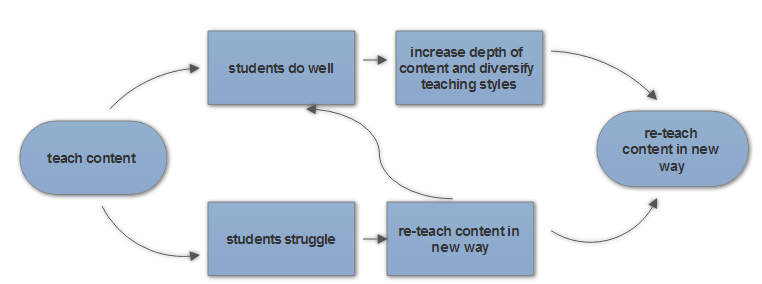Next year I’ll be teaching business studies for the first
time in my life. I will be at a new school, with new administrators, and
different students than I am used to (I have worked mostly with native
Chinese-speaking students who are learning English as a second language, but
the school I will teach for next year is a true international school where
Chinese passport holders would not be allowed admission.) With all of this uncertainty, it is a good
idea to plan out some objectives and both formative and summative assessments
for lessons taught according to those objectives. In my previous post you can read about that.
While I don’t yet know which challenges I might have with my students, I do
anticipate needed to integrate differentiation strategies in my teaching. Today
I’ll discuss that focus.
Because this is a new school for me, I do not know for sure
what challenges my students might have. However I anticipate that there will be
some students with mild to medium learning disabilities like dyslexia or
ADD/ADHD. I also anticipate some (but not all) students will be English
language learners.
To accommodate for these students with learning
disabilities, I plan to use multiple visual aids, speak slowly when necessary,
repeat instructions, use non-verbal signals, and be as expressive as possible.
For the ELLs, I will allow and encourage language
dictionaries or apps in class, and include instructions on the PPT so students
can read instructions after I give them orally.
I also plan to have the students work together for the
majority of the project. Their goal will be to understand several aspects of
innovation and entrepreneurship well enough to be able to effectively analyze a
business situation and give a presentation to the class about the best ways for
a small business to adapt a new technology. This will require a deep level
understanding of innovation, the barriers to adaption, and the enterprising
elements that help overcome those barriers. I will group the students so that
students with disabilities or language barriers will be able to work together
with stronger students in order to learn from each other.
I will also be monitoring and providing feedback to
individuals and to groups throughout the project. If I find that some students
understand the material very quickly while other students really struggle with
it, I will ask stronger students to take a leadership role inside the groups.
Each member will need to present, so groups will need to work together and
teach each other in order to succeed.
Resources I will make available to students include:
language dictionaries, emailing the PPT to students to be able to review on
their own, access to my personal Wechat account to ask questions after class,
and partners within the peer groups who can teach/explain concepts and debate
ideas in new ways.

No comments:
Post a Comment